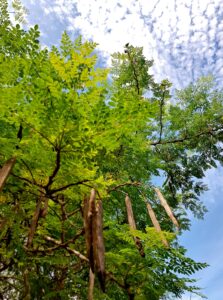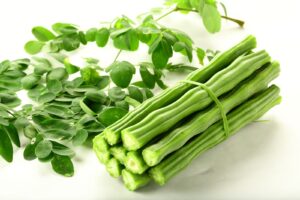Who Discovered Moringa Oleifera?
Moringa Oleifera has gained a reputation in recent years as a natural powerhouse for its numerous health benefits. From its high nutritional value to its antioxidant and anti-inflammatory properties, this plant has become increasingly popular as a natural supplement. But where did it all begin? Understanding the history and origin of Moringa Oleifera is crucial to truly appreciating its significance. This article aims to shed light on the discovery of Moringa Oleifera, exploring its ancient roots and the modern scientific research that has revealed its incredible benefits. So, who discovered Moringa Oleifera? Let’s delve into the past and present to uncover the answer.
In 1785, French naturalist Jean-Baptiste Lamarck wrote a description of the species. M. oleifera and M. concanensis share a common ancestor that split from the lineage of M. peregrina, according to a combined examination of morphology and DNA.

Who is credited with discovering Moringa Oleifera?
In 1785, the French naturalist Jean-Baptiste Lamarck documented this species. When we examine both its physical characteristics and DNA, we find that Moringa oleifera is most closely connected to Moringa concanensis. Moreover, it’s apparent that the common ancestor of these two species diverged from the lineage of Moringa peregrina.
Determining exactly who discovered Moringa Oleifera is a difficult task, as the use of this plant predates recorded history. It has been utilized by indigenous cultures across the world for thousands of years, with different communities having their own unique ways of incorporating it into their daily lives.
That being said, the earliest recorded evidence of Moringa Oleifera use comes from ancient Indian Ayurvedic texts, which date back over 5,000 years. These texts detail the plant’s use in treating a wide range of conditions, from respiratory problems to joint pain.
Over time, the use of Moringa Oleifera spread across Asia and Africa, where it was used in traditional medicine and as a food source. The plant’s ability to thrive in dry and arid climates made it particularly valuable in areas where other crops struggled to grow.
In the modern era, it was not until the mid-20th century that the medicinal properties of Moringa Oleifera were scientifically studied. While various researchers have contributed to our understanding of the plant’s properties, no single individual can be credited with its discovery.
Rather, the discovery of Moringa Oleifera is the result of a collective effort spanning centuries and continents. From ancient healers to modern scientists, the knowledge and wisdom of many individuals have contributed to our understanding of this incredible plant.
The discovery of Moringa

The discovery of Moringa Oleifera dates back to ancient times, where it was commonly used in traditional medicine across different cultures. This plant was utilized by civilizations across Asia, Africa, and Latin America due to its multiple health benefits. Ayurvedic medicine, one of the oldest systems of medicine in the world, documented the use of Moringa Oleifera thousands of years ago to treat various ailments such as arthritis, digestive issues, and skin problems.
Through trade and cultural exchange, the use of Moringa Oleifera spread across the globe. Ancient sailors would carry Moringa Oleifera seeds with them on long voyages as a source of nutrition, while farmers used its leaves as a natural fertilizer for crops. Moringa’s use in traditional medicine and agriculture highlights its significance in daily life.
Modern science reveals Moringa Oleifera benefits, sparking renewed interest in this ancient plant. The nutritional and medicinal properties of Moringa Oleifera have been explored in numerous studies, with researchers discovering its potent antioxidant and anti-inflammatory properties. While the history of its discovery may be ancient, the impact of Moringa Oleifera is still being felt today.
Modern discovery of Moringa Oleifera
While the use of Moringa Oleifera dates back centuries, it was not until the 20th century that modern science began to explore its potential benefits. In the 1940s, scientists at the National Institute of Health (NIH) in the United States began researching the medicinal properties of Moringa Oleifera. This research focused on the plant’s anti-tumor properties and its potential use in cancer treatment.
Since then, research on Moringa Oleifera has continued to uncover its many benefits. It has been found to have antimicrobial properties, helping to fight off harmful bacteria and viruses. It’s nutrient-dense, high in vitamins & minerals like C, A, calcium, and iron.
As interest in natural supplements has grown in recent years, so has the popularity of Moringa Oleifera as a superfood. Moringa’s natural energy boost and immune system support make it a popular dietary supplement.
While modern science has provided a deeper understanding of the health benefits of Moringa Oleifera, it is important to recognize the contributions of the indigenous communities that have used it for centuries. Their knowledge and understanding of the plant’s properties have been passed down through generations, and it is their wisdom that has helped to bring the benefits of Moringa Oleifera to the world.

The global impact of Moringa Oleifera
The impact of Moringa Oleifera can be felt across the globe. Its many health benefits have made it a popular plant for both food and medicine. Areas where malnutrition and hunger are prevalent, Moringa Oleifera has been shown to be a valuable source of vital nutrients.
Moringa Oleifera leaves are rich in vitamins A, C, and E, as well as minerals like calcium and iron. In fact, they contain more iron than spinach, making them a particularly valuable food source for those at risk of anemia. Moringa Oleifera has anti-inflammatory and antioxidant properties, making it valuable for chronic health conditions.
The plant’s impact on the environment should not be overlooked either. Its ability to grow in dry and arid climates makes it a valuable crop in areas where water is scarce. Additionally, Moringa Oleifera leaves have been found to be an effective natural fertilizer, helping to improve soil health and increase crop yields.
Beyond its nutritional and environmental benefits, the popularity of Moringa Oleifera has also had a significant economic impact. The plant’s popularity led to the creation of small businesses and cooperatives producing Moringa Oleifera products.
In short, the discovery and ongoing study of Moringa Oleifera has had a global impact that cannot be overstated. From its ability to improve health outcomes in communities across the world, to its potential to improve soil health and support local economies, Moringa Oleifera represents a powerful force for good.
In Conclusion
The discovery of Moringa Oleifera may be shrouded in mystery, but its impact on the world is undeniable. For generations, indigenous communities have used the plant for health benefits confirmed by modern science.
As we delve deeper into the study of Moringa Oleifera, we discover even more of its remarkable capabilities. Moringa Oleifera supports communities with limited food resources and promotes sustainable agriculture.
The original discoverer of this plant may remain unknown, but its benefits have been passed down throughout history. And as we look to the future, it is clear that the potential of Moringa Oleifera is limitless. Its impact on the world will only continue to grow in the years to come.
References
Fahey, J. (2005). Moringa oleifera: A review of the medical evidence for its nutritional, therapeutic, and prophylactic properties. Part 1. Trees for Life Journal, 1(5), 1-15. https://www.tfljournal.org/article.php/20051201124931586
Moringa With Barry stores offer a variety of moringa products. These include: Moringa Powder, Moringa Tea, Moringa Capsules and Moringa Oil.

